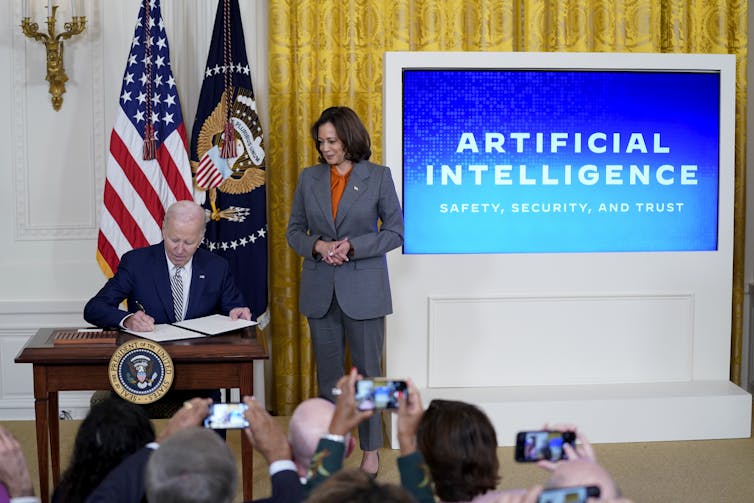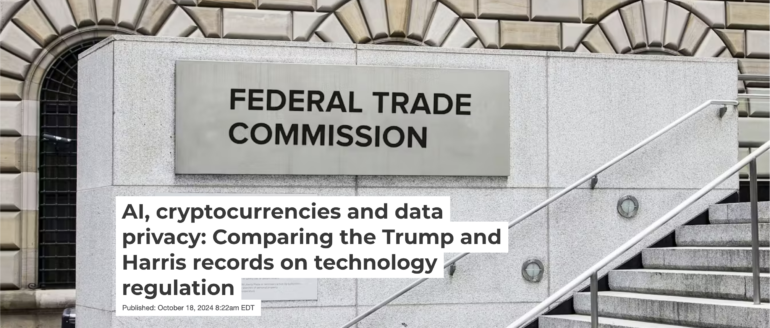It’s not surprising that technology regulation is an important issue in the 2024 U.S. presidential campaign.
The past decade has seen advanced technologies, from social media algorithms to large language model artificial intelligence systems, profoundly affect society. These changes, which spanned the Trump and Biden-Harris administrations, spurred calls for the federal government to regulate the technologies and the powerful corporations that wield them.
As a researcher of information systems and AI, I examined both candidates’ records on technology regulation. Here are the important differences.
Algorithmic harms
With artificial intelligence now widespread, governments worldwide are grappling with how to regulate various aspects of the technology. The candidates offer different visions for U.S. AI policy. One area where there is a stark difference is in recognizing and addressing algorithmic harms from the widespread use of AI technology.
AI affects your life in ways that might escape your notice. Biases in algorithms used for lending and hiring decisions could end up reinforcing a vicious cycle of discrimination. For example, a student who can’t get a loan for college would then be less likely to get the education needed to pull herself out of poverty.
At the AI Safety Summit in the U.K. in November 2023, Harris spoke of the promise of AI but also the perils from algorithmic bias, deepfakes and wrongful arrests. Biden signed an executive order on AI on Oct. 30, 2023, that recognized AI systems can pose unacceptable risks of harm to civil and human rights and individual well-being. In parallel, federal agencies such as the Federal Trade Commission have carried out enforcement actions to guard against algorithmic harms.

President Joe Biden signs an executive order addressing the risks of artificial intelligence on Oct. 30, 2023, with Vice President Kamala Harris at his side.
AP Photo/Evan Vucci
By contrast, the Trump administration did not take a public stance on mitigation of algorithmic harms. Trump has said he wants to repeal President Biden’s AI executive order. In recent interviews, however, Trump noted the dangers from technologies such as deepfakes and challenges posed to security from AI systems, suggesting a willingness to engage with the growing risks from AI.
Technological standards
The Trump administration signed the American AI Initiative executive order on Feb. 11, 2019. The order pledged to double AI research investment and established the first set of national AI research institutes. The order also included a plan for AI technical standards and established guidance for the federal government’s use of AI. Trump also signed an executive order on Dec. 3, 2020, promoting the use of trustworthy AI in the federal government.
The Biden-Harris administration has tried to go further. Harris convened the heads of Google, Microsoft and other tech companies at the…



